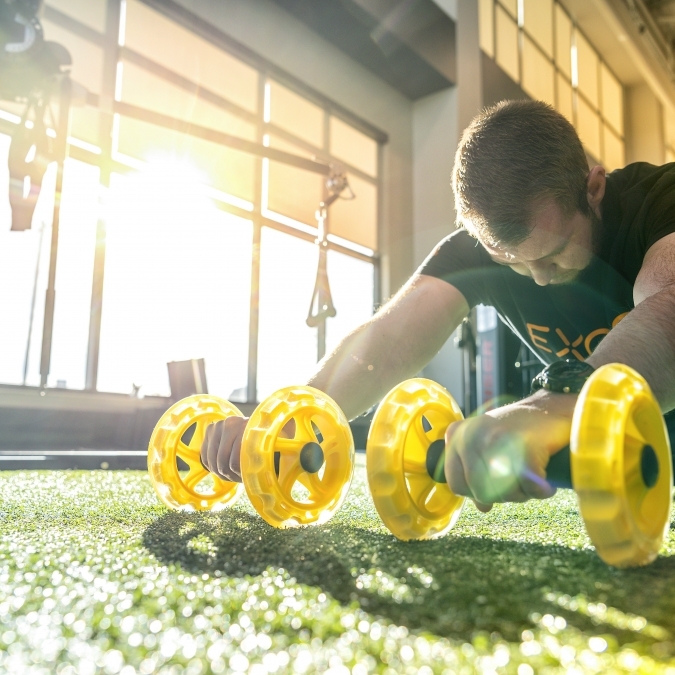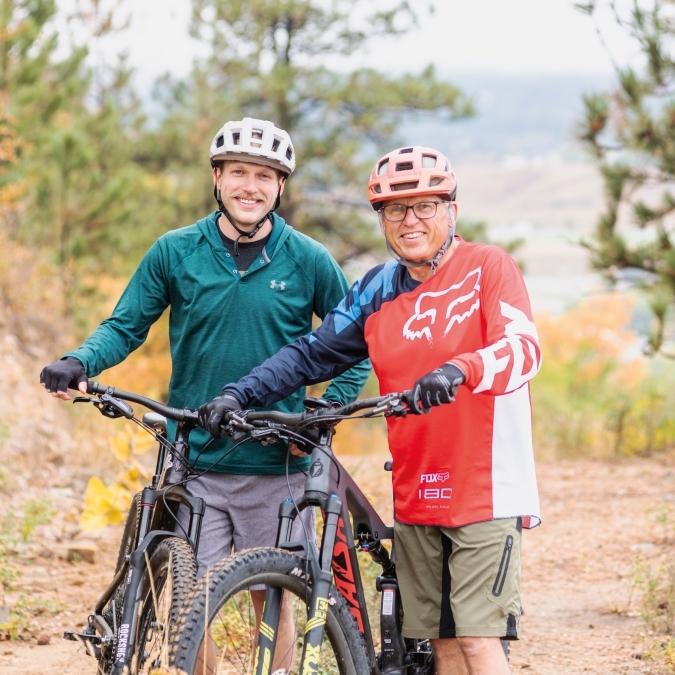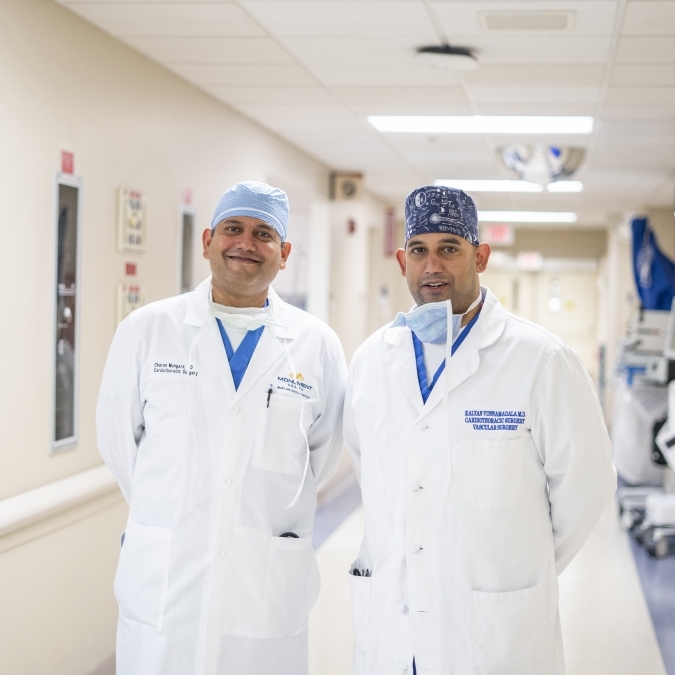Golf almost always gets portrayed as a low-impact sport, and while it’s true that golfers don’t necessarily experience the same forces a person playing football or basketball might, that doesn’t mean that there’s zero impact. “The golf swing can put a great deal of stress on the body,” says Justin Feeser, manager of rehabilitation at Monument Health Rehabilitation, and Titleist Performance Institute (TPI) certified physical therapist. “It’s not unusual for golfers to experience lower back, wrist, shoulder and elbow issues and these often can be traced back to poor preparation and fitness levels.”
Most golfers probably think that a good summer season means avoiding the sand traps, and hopefully improving their handicap. A great season, however, should also include avoiding downtime from injury or pain. The best way to do that? Physical conditioning throughout the year. Maintaining strength, range of motion and flexibility not only decreases the likelihood of injury, but can also lead to a more consistent and efficient golf swing. Ultimately, that can mean lower scores.
 "An efficient golf swing requires different areas of the body to function in specific ways. Areas like the shoulders, upper back, wrists, hips and ankles need adequate mobility. Other areas, like the lower back, pelvis, knees, feet and elbows, need to demonstrate strength and stability. The motion seems simple, but there’s a lot happening throughout the body when a golfer takes a swing."
"An efficient golf swing requires different areas of the body to function in specific ways. Areas like the shoulders, upper back, wrists, hips and ankles need adequate mobility. Other areas, like the lower back, pelvis, knees, feet and elbows, need to demonstrate strength and stability. The motion seems simple, but there’s a lot happening throughout the body when a golfer takes a swing."
It's Never Too Late to Start
What if you haven’t trained in the offseason? You can still make the most of the summer with some simple exercises; scan the QR code on this page to access them. These don’t require six-pack abs, a bodybuilder physique or hours in the gym, just a little bit of time a few days each week. The end results — a more efficient swing, reduced chance of injury and pain and the possibility of improved scores — are well worth the effort.
Justin says that adequate strength and mobility are the foundation of a good golf swing, and that starts with good posture; addressing this foundation while also working with a knowledgeable professional to understand and apply appropriate swing mechanics can make a tremendous difference in both performance and enjoyment of the game.
The Titleist Performance Institute (TPI) developed a program to train medical professionals in understanding the correlation between a golfer’s physical limitations and their swing flaws. Monument Health Rehabilitation employs two TPI certifified physical therapists, Justin Feeser, MPT, is located at Monument Health Rehabilitation in Spearfifish, and Michael Cavazos, DPT, is located at Monument Health Rehabilitation at the Orthopedic and Specialty Hospital in Rapid City.
No two golf swings are identical, but consistency and efficiency are important when it comes to creating a powerful and repeatable swing. That requires practice, but bringing your “A” game means conditioning your body to avoid injury and to maximize effectiveness. Because while not everyone is going to win the Masters, everyone wants to play as well — and as pain-free — as possible.
Golf is a low impact sport, but injuries still occur. Monument Health’s Titleist Performance Institute certified professionals can analyze your fitness level and golf swing to keep you in shape and on the course.




